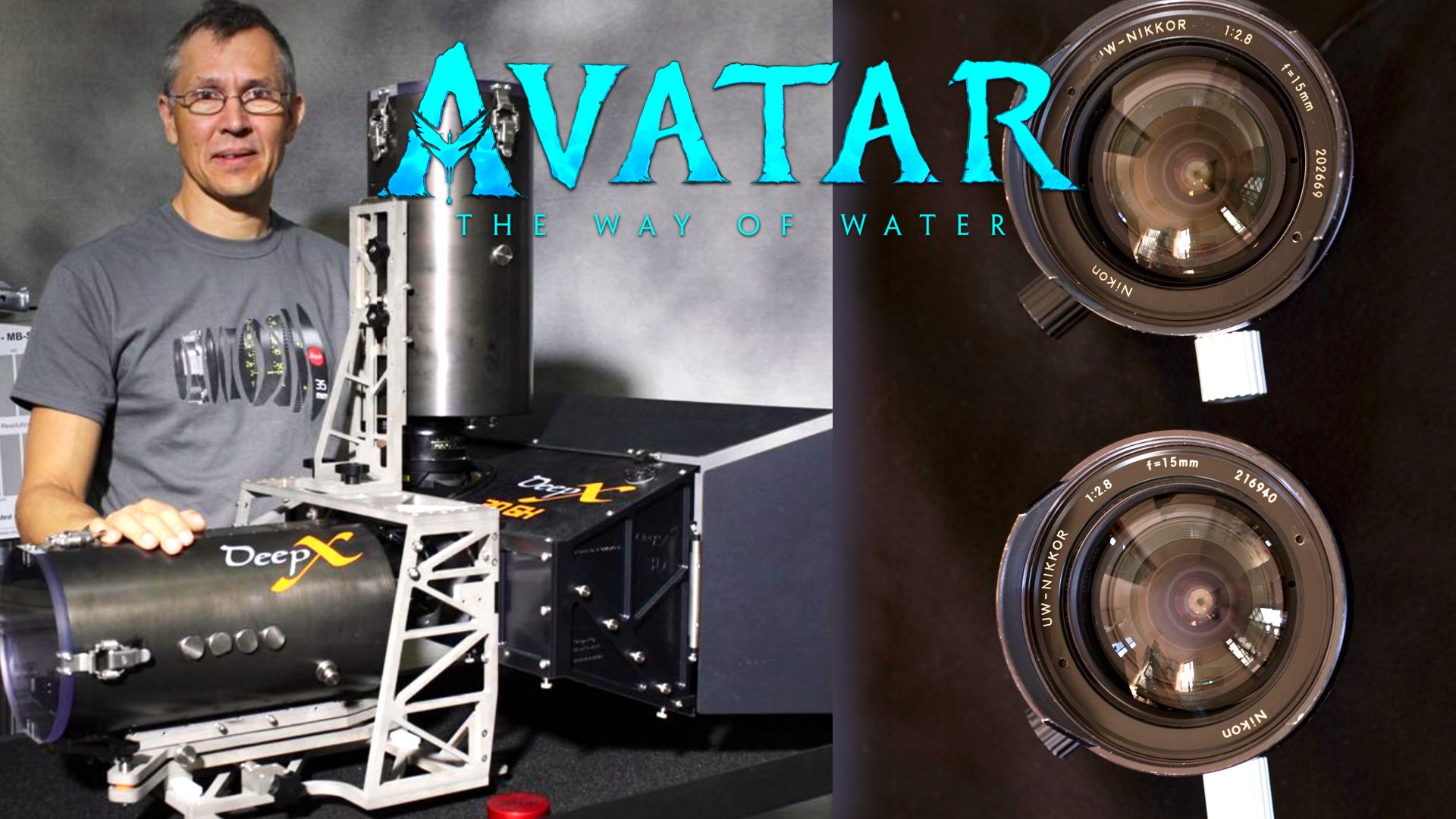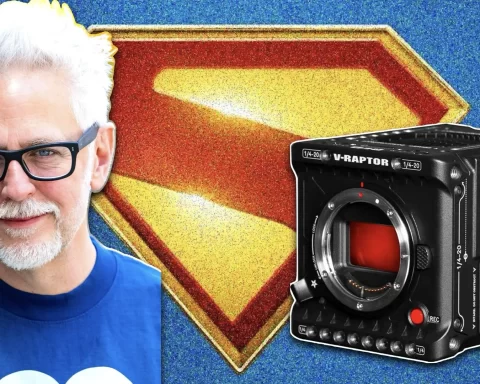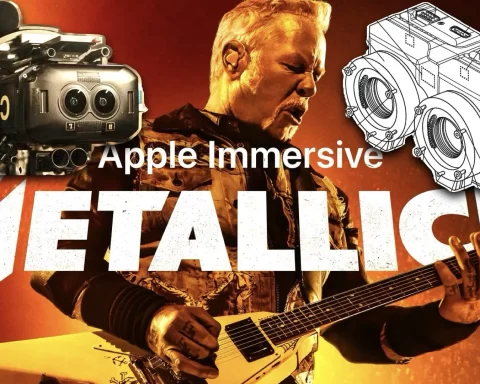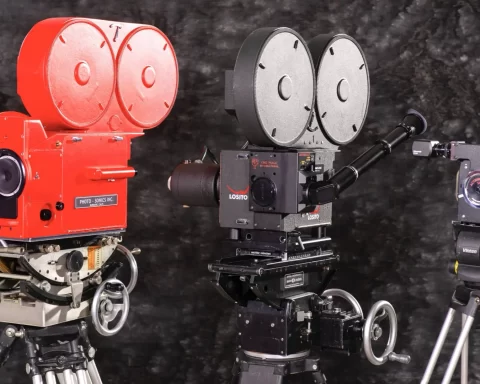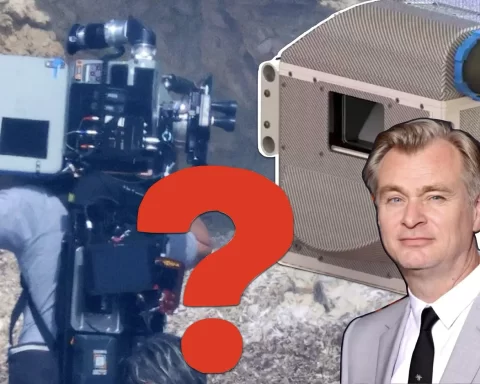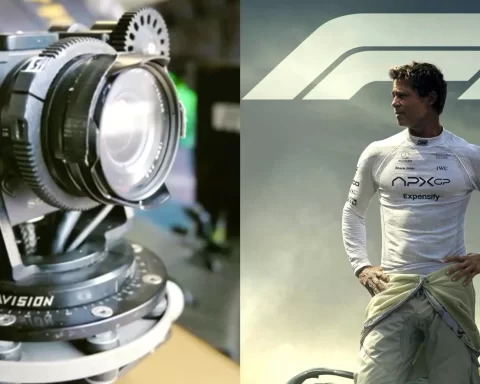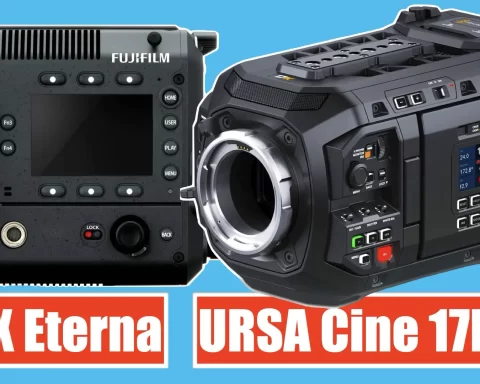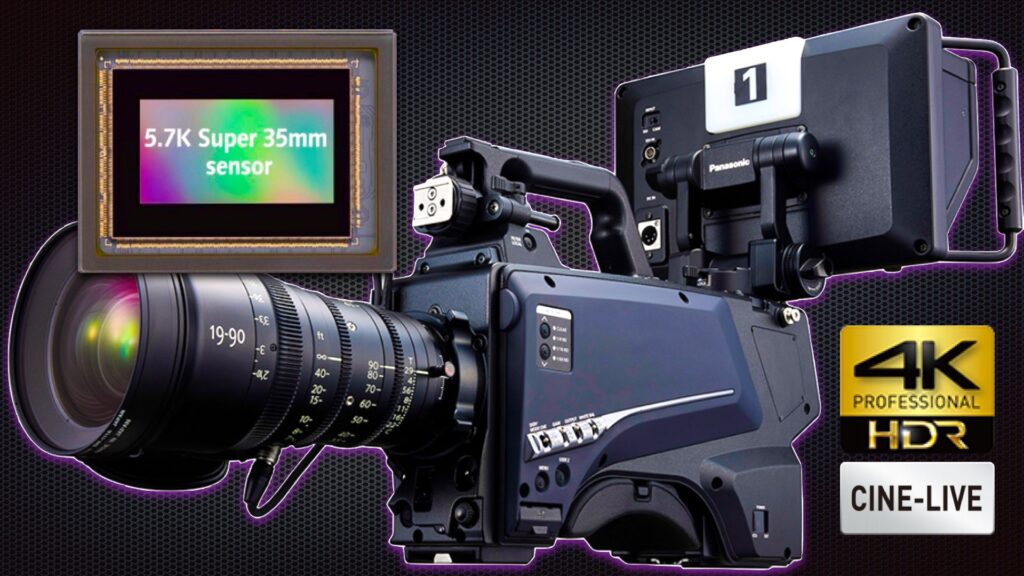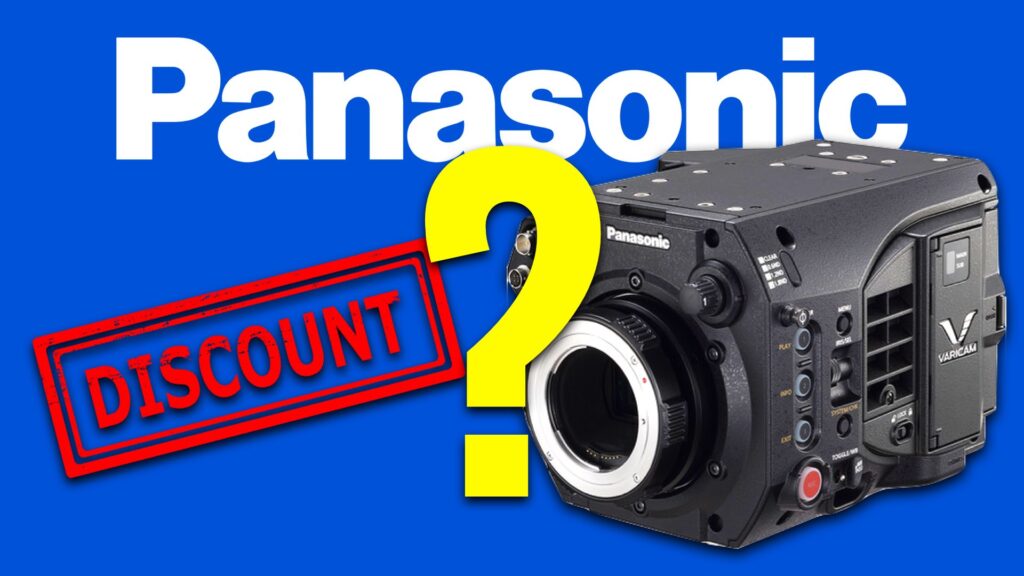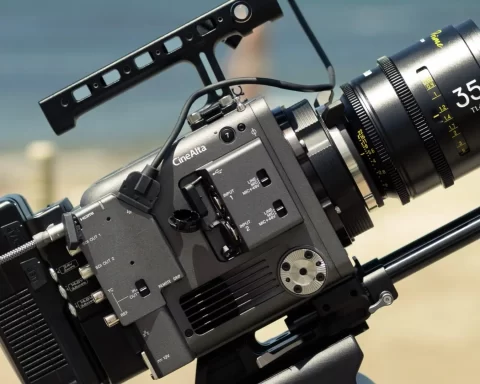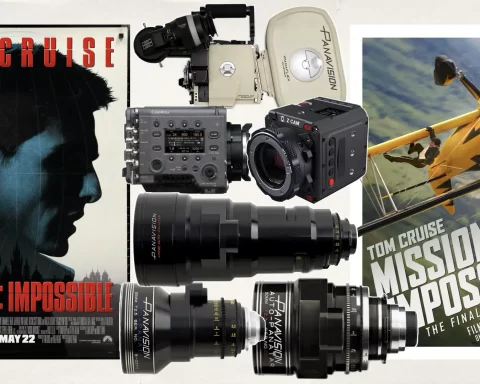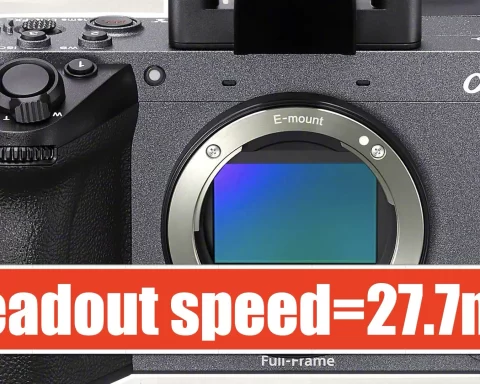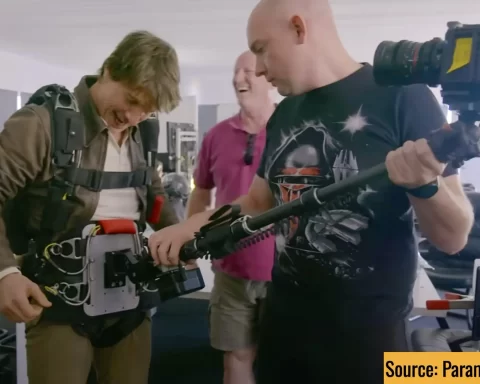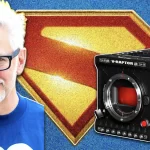The Avatar 2 has been shot mainly underwater, by utilizing, for the first time, a specific camera tech. Besides the Sony VENICE, the underwater rig was built from a 3D Beam Splitter called DeepX 3D which was developed by inventor and cinematographer Pawel Achtel. The glass used was the Nikonos 15mm lenses, which are special old lenses developed by Nikon for underwater photography. This combination was assembled in order to grant clean, distortion-free 3D IMAX underwater imagery. All details (and credits) are below:
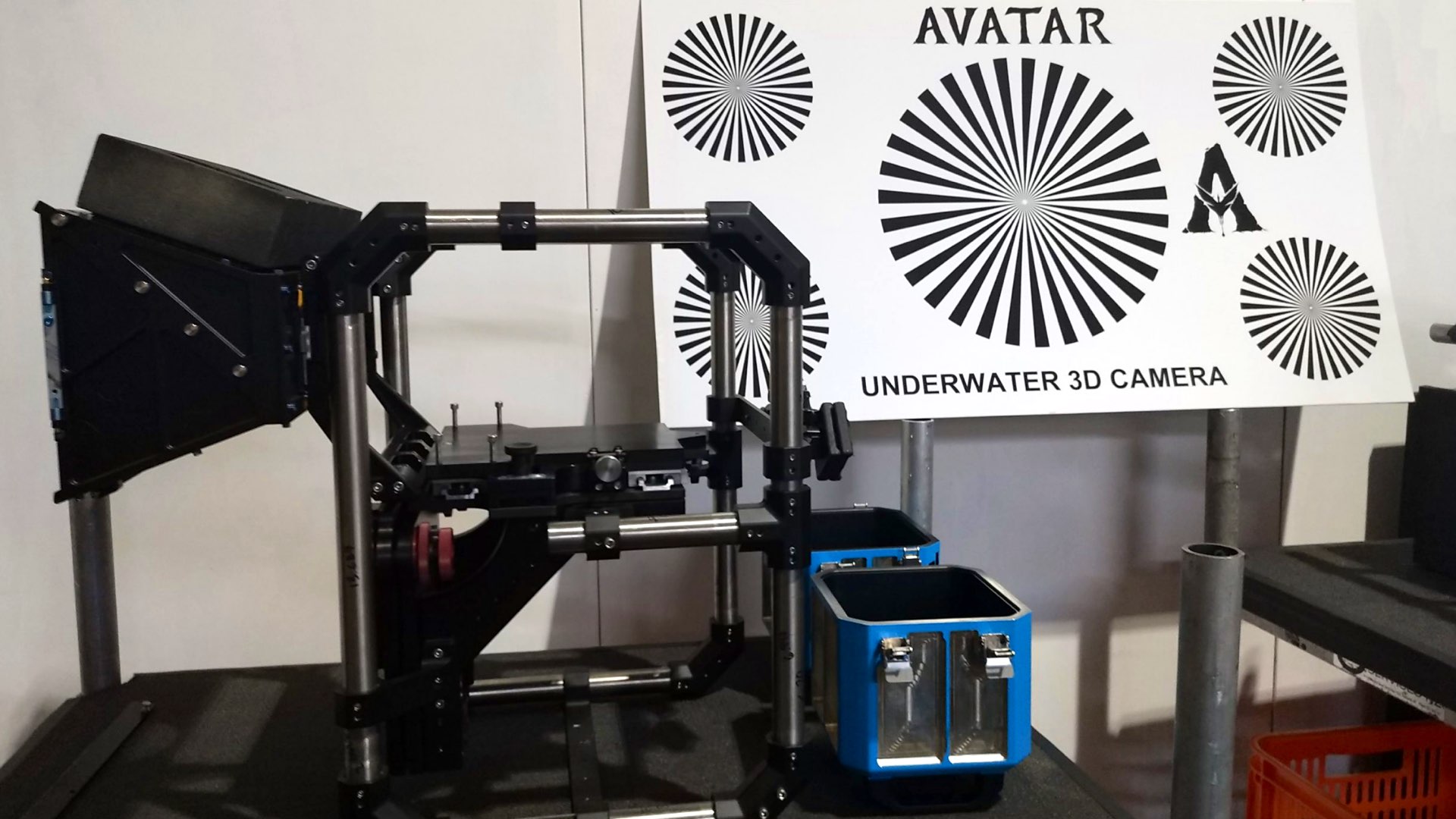
Waiting for the correct technology
It’s time to grant credit to the man that is responsible for the stunning 3D-IMAX capture of Avatar 2. And I’m not talking about the mighty James Cameron. Australian cinematographer, Pawel Achtel ACS, is the inventor of the 3D rig that Cameron utilized for Avatar 2 underwater sequences. It can be said that Cameron has been waiting for someone that will create the appropriate cinematography technology for capturing underwater imagery dedicated to huge screens (IMAX). We’ll not be exaggerating by saying that thanks to Pawel, Avatar 2 was created.
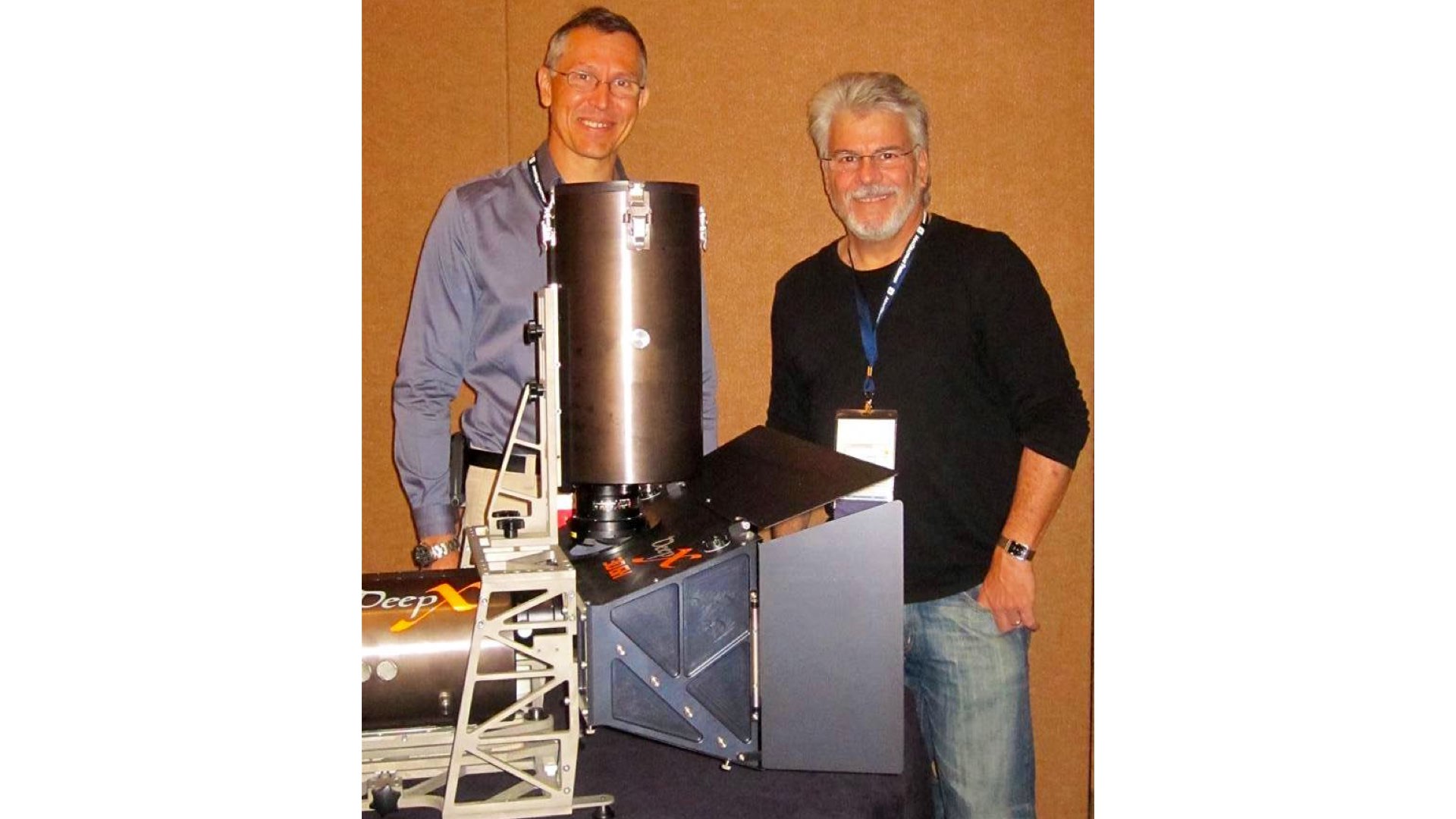
Huge screen technology
Pawel Achtel ACS is a cinematographer, scientist, and investor. He has been focusing on huge screen cinematography technologies for years. Pawel runs his company called Achtel Pty Limited which is an Australian company specializing in all aspects of motion picture production and cinema innovation technologies. We wrote about his recent innovation — ACHTEL 9×7 Digital Cinema Camera that is designed specifically for VFX, VR, Giant Screen, and IMAX Cinema productions. The camera Global Shutter, a 4:3 aspect ratio, sensor featuring 65 Million photo sites and delivers uncompressed 16-bit RAW footage up to 11 GB/s – approximately 20 times more than other high-end digital cinema cameras. However, in Avatar 2, James Cameron chose to use another tech that Pawel invented years ago (in 2015), which is the 3D submersible beam splitter titled DeepX 3D. Why? Because DeepX 3D is one of the sole options to offer underwater 3D IMAX imagery without distortion, aberrations, and artifacts.
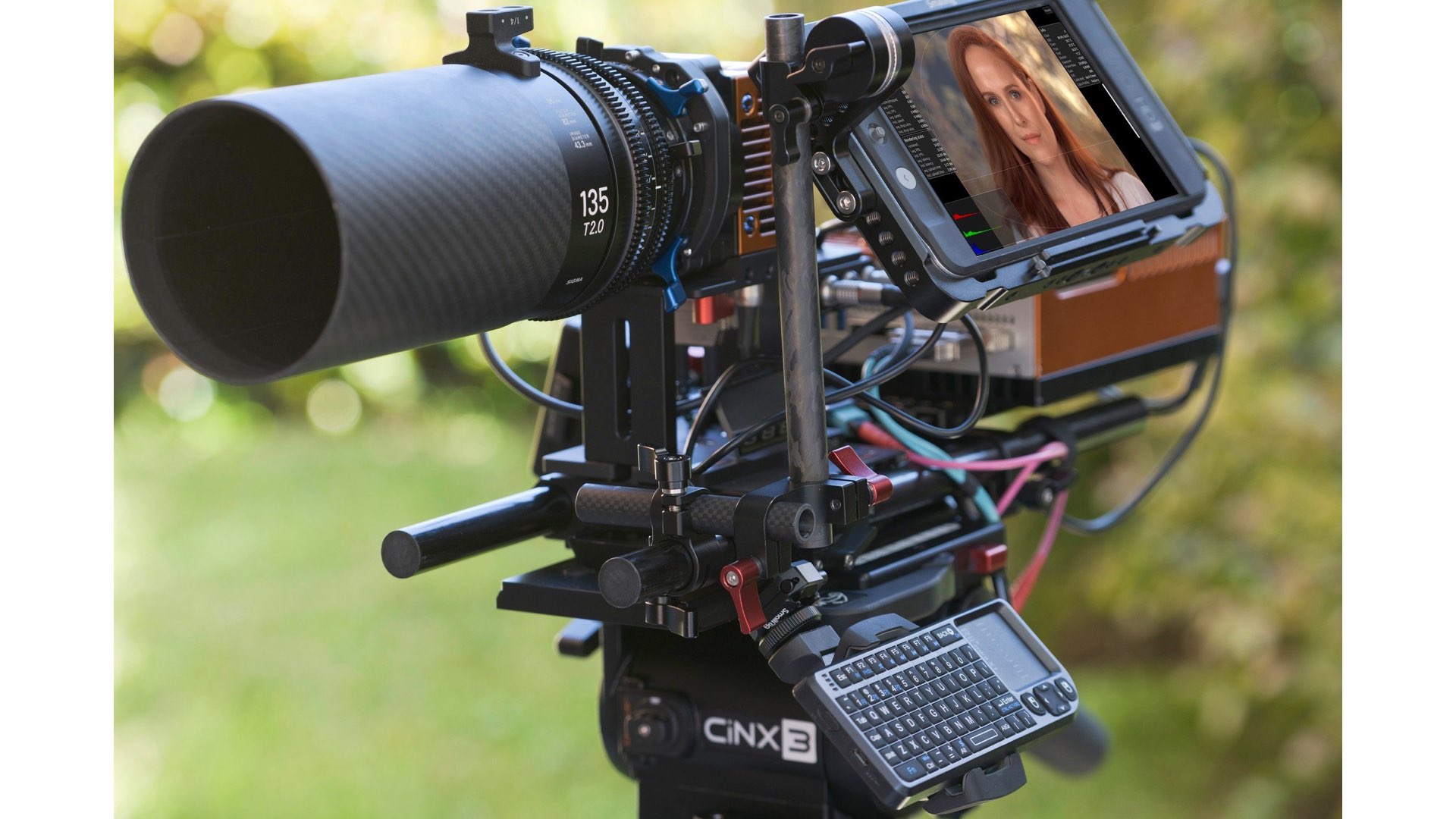
Underwater 3D cinematography: Challenges
According to Pawel, underwater cinematography, especially for 3D purposes, faces a vast amount of challenges. Here’s his explanation: “Compared to filming on land, filming underwater always posed challenges. But, it is not just in terms of keeping the camera dry. The most difficult aspect of filming underwater is the optics. As it turns out it is the ultimate factor limiting image quality when filming below the waves. For decades the state-of-the-art was to place traditional lenses designed for filming on land behind flat and dome ports. Whilst this appears as a reasonable solution, it became apparent that aberrations, image plane curvature, and distortions caused by those ports severely limit the image quality that can be achieved when using housed lenses”.
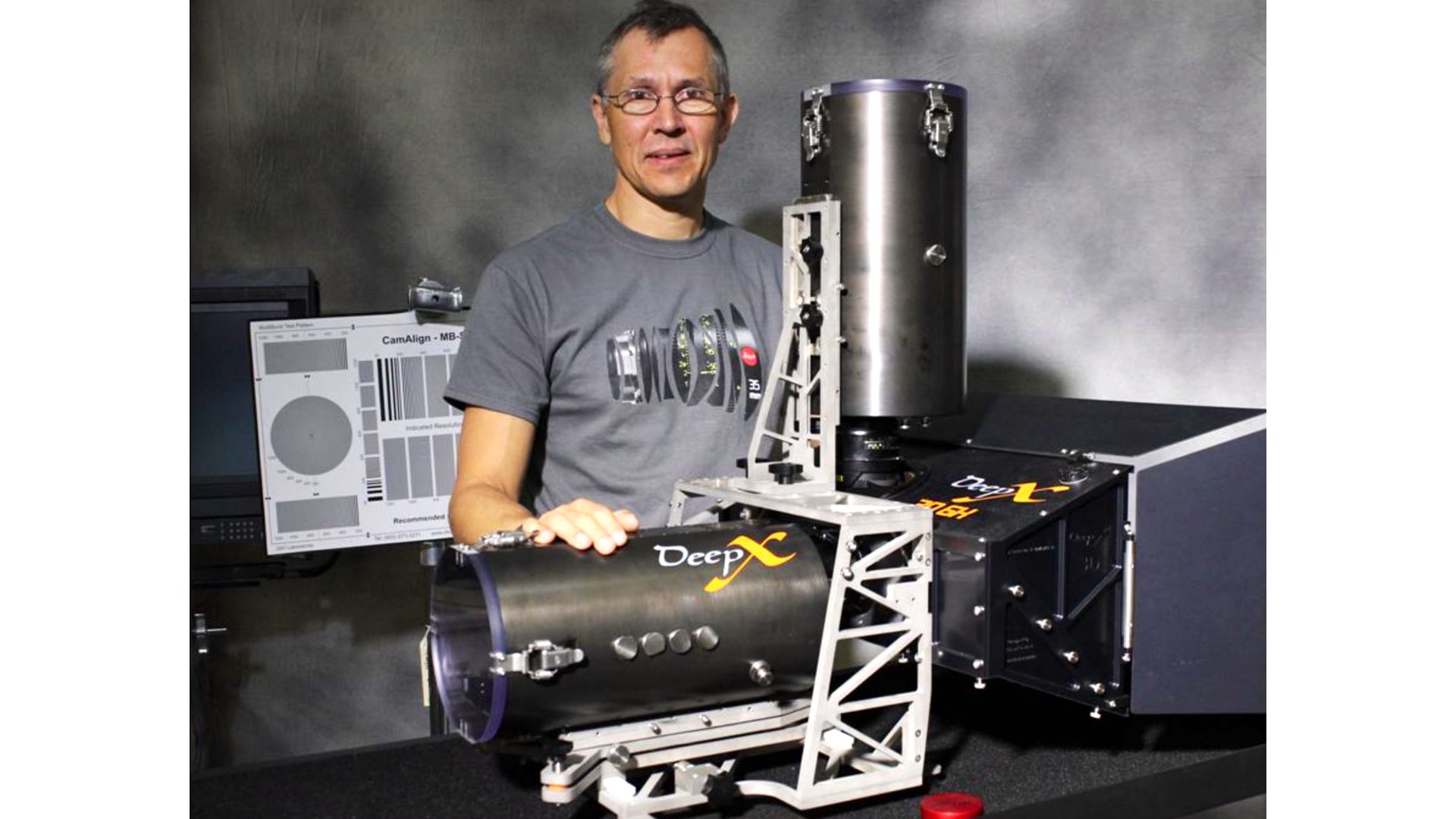
The limitation of resolution
Pawel elaborates on his website: “Dome ports, which are used for wide-angle lenses, produce image plane curvature combined with astigmatism when placed underwater. This causes extensive blurring of images. In ideal conditions, such systems are limited to approximately 2K equivalent sharpness (approximately 1000 line pairs per picture width). This falls far short of today’s high-resolution camera standards. Flat ports perform even worse. While having negligible effect out of the water, a flat port produces severe chromatic aberrations, pin-cushion distortions, astigmatism, and (often undesirable) image magnification. For wide-angle imaging, a flat port limits image sharpness to the equivalent of approximately 1K (standard definition) quality. An example of a flat port can be a dive mask. Much of the underwater content that is claimed to be 4K or 8K is really limited to the approximately high-definition quality or less by its optics, even though it may be recorded on an 8K capable camera”.
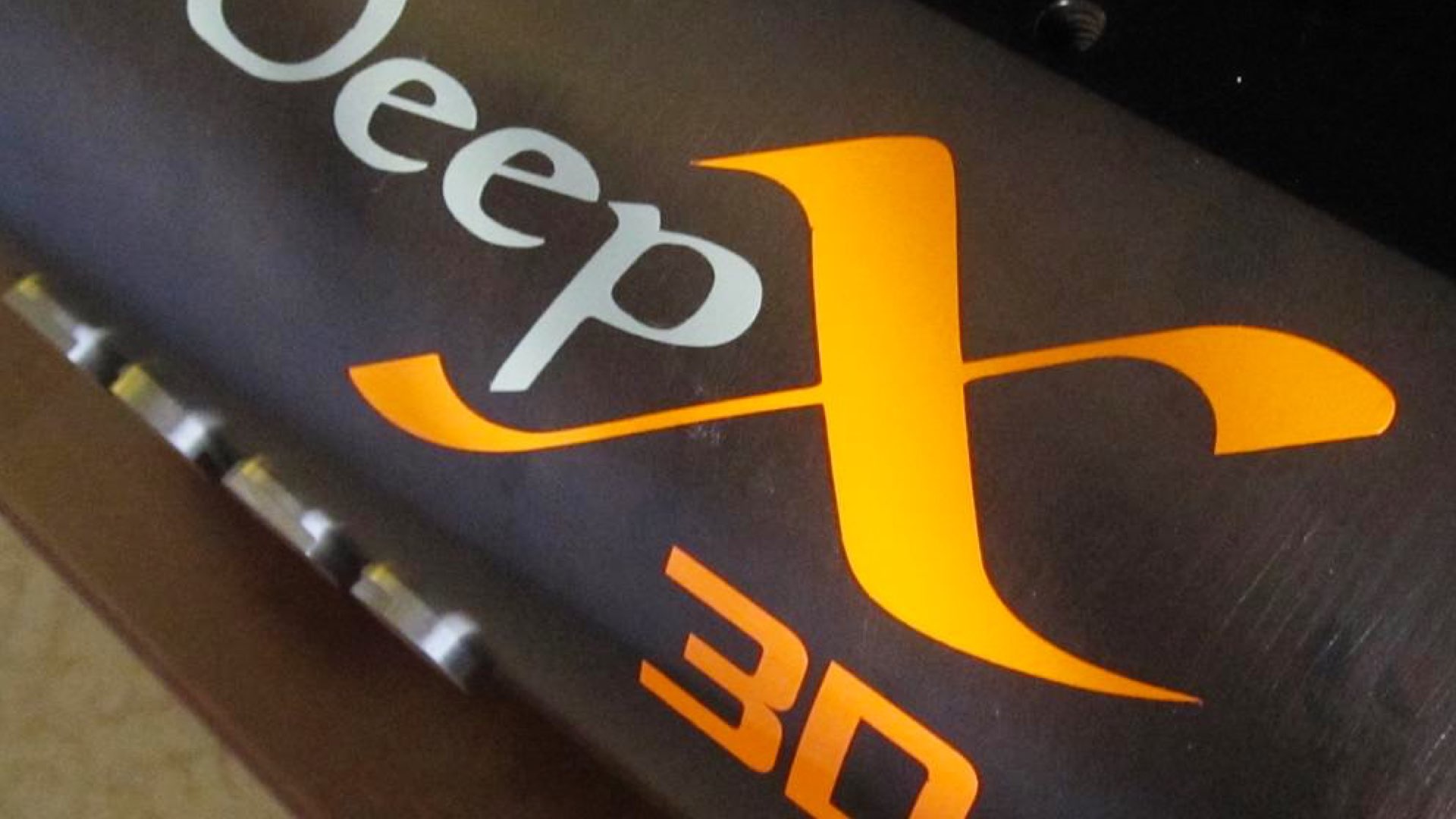
The limitation of weight
As explained, especially in the 3D that most venues need these days —Traditional underwater housings reduce image quality and create distortion to such an extent that the images fall far short of what’s required for and possible on today’s giant screens and, in 3D, can actually cause uncomfortable eye strain. Furthermore, typical cameras weigh more than 120Kg and require cranes just to get them in the water too. Hence, for that purpose, DeepX 3D was born, to offer a compact and friendlier 3D underwater setup, and more importantly, to eliminate those artifacts to the movie that can be watched on an IMAX screen with 3D glasses without casting any eye-strain.
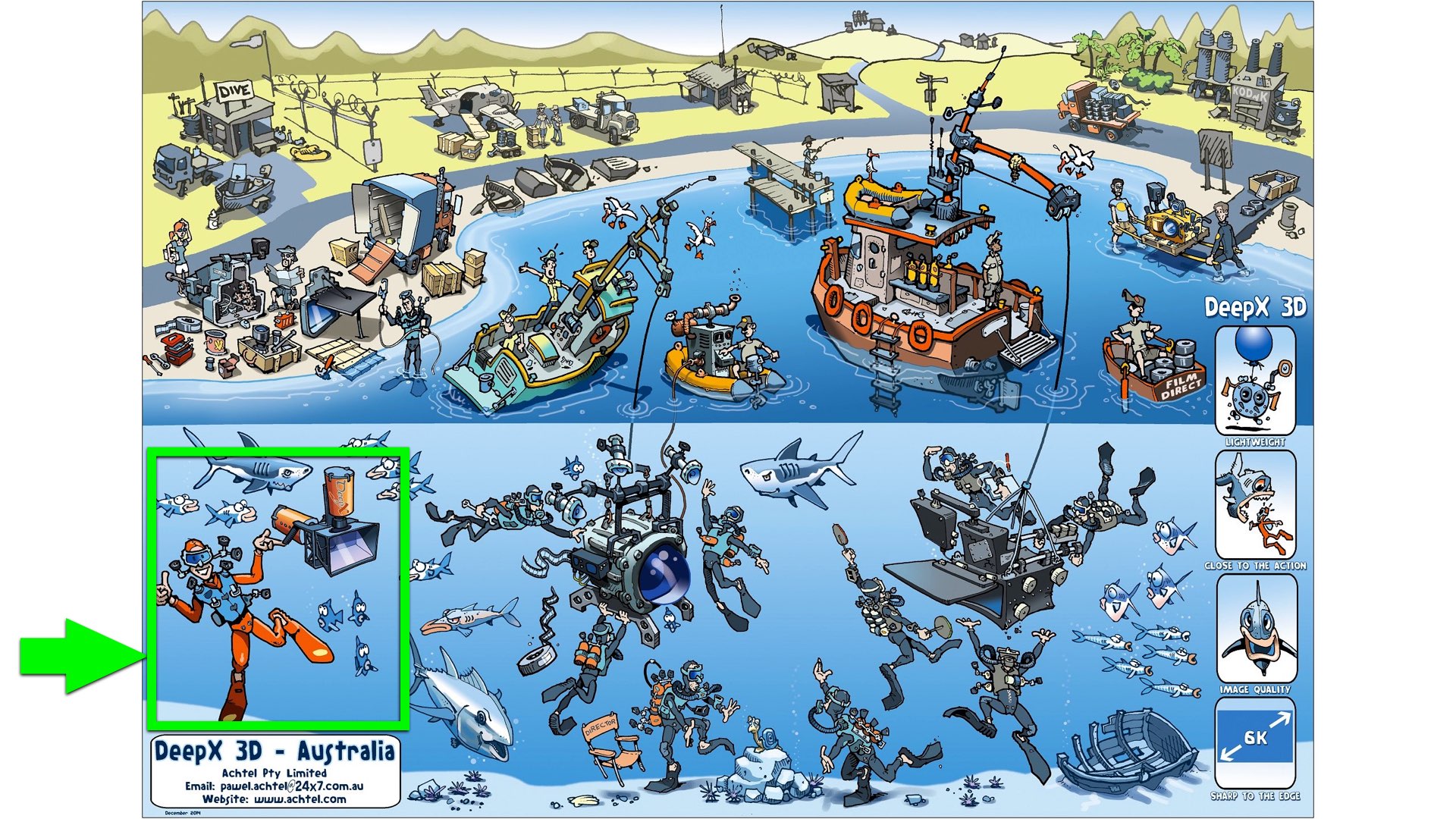
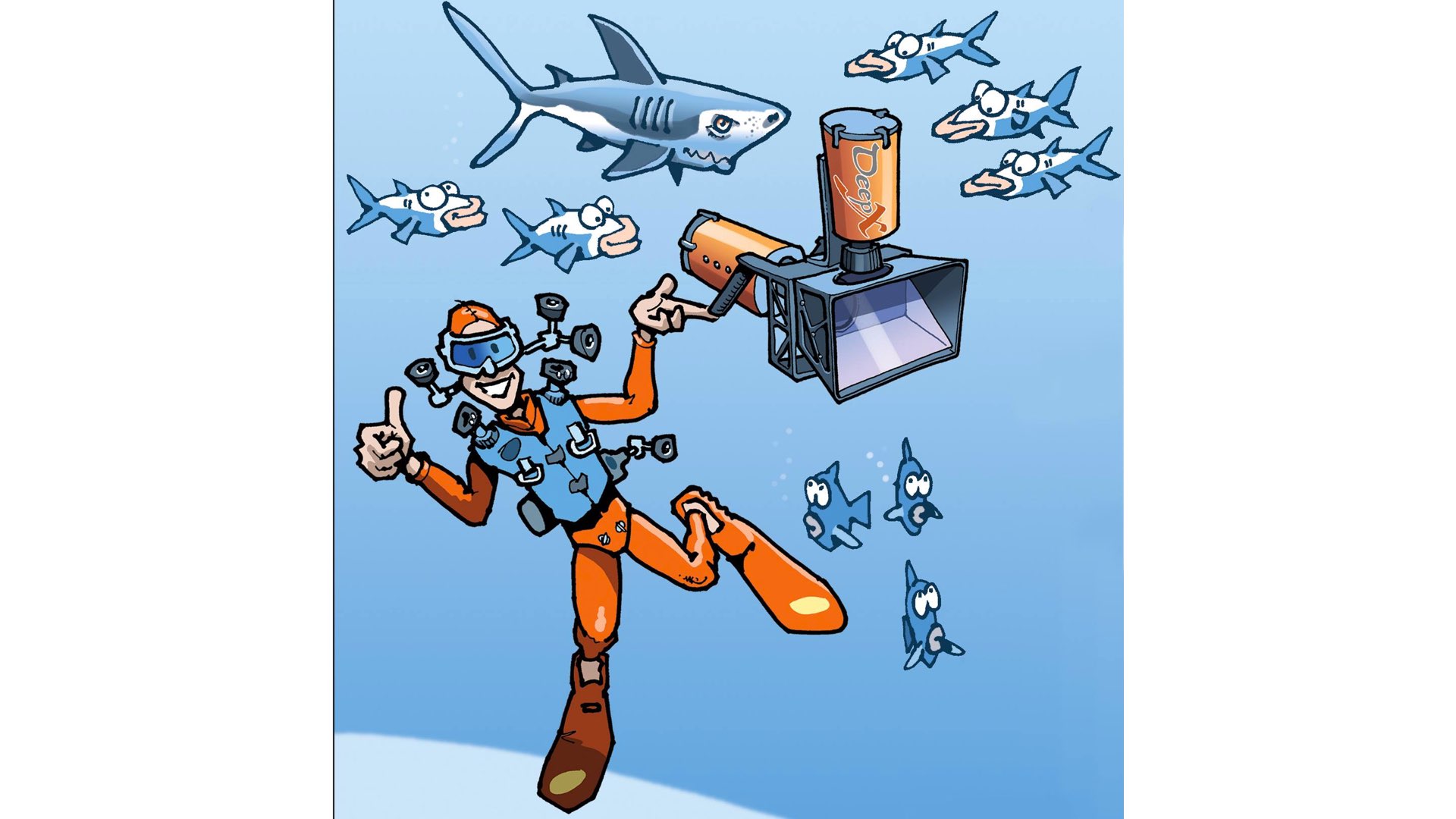
DeepX 3D: The underwater rig of Avatar 2
This is how DeepX 3D was described by Pawel in the 2015 press release: “DeepX 3D is the world’s first, patented camera system designed for uncompromised capture of stereoscopic 3D images underwater when using submersible lenses. Unlike other underwater 3D beamsplitter systems that house a beamsplitter behind a flat port, DeepX 3D is completely submerged in water. Such revolutionary design allows a wide angle of view, no geometric distortions, and no chromatic aberrations that are associated with traditional designs. It provides virtually unlimited sharpness from corner to corner. DeepX 3D is the only underwater 3D system allowing immersive, high-resolution stereoscopic 3D images underwater. It delivers more than an order of a magnitude more detail than it is possible with traditional housed systems”.
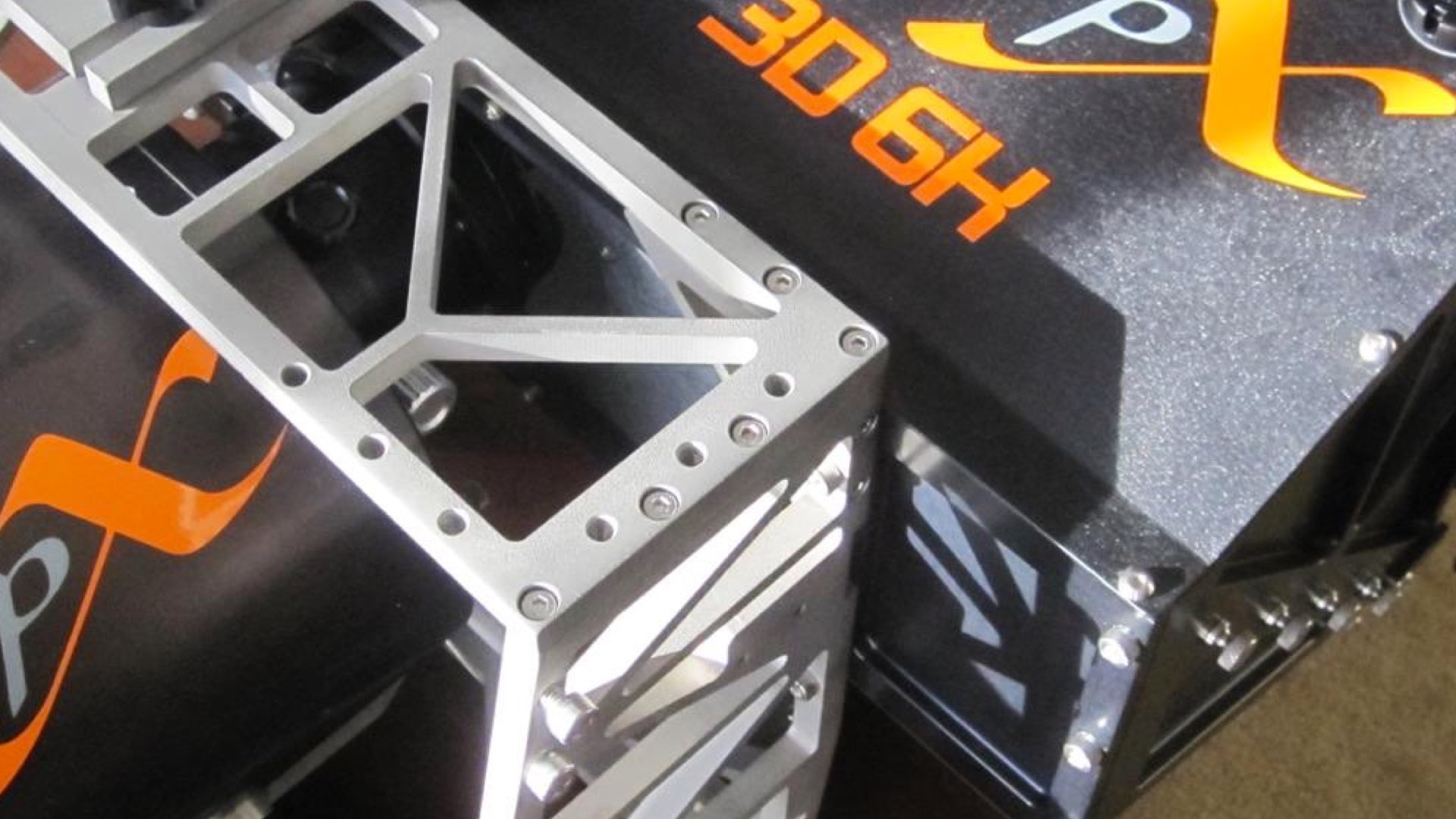
Less than 30Kg – Single-man operation
DeepX 3D weighs in at less than 30kg and can be handled by a single cameraman, yet produces images that far surpass those of conventional camera systems. Using dedicated and optically matched underwater lenses, and a unique formulation of reflective material that’s been specially developed for the beam splitter mirror that evenly splits the highly polarised ambient light underwater, Achtel’s new camera system uniquely creates images that meet and surpass, the 4K standard of today’s giant screen technology.
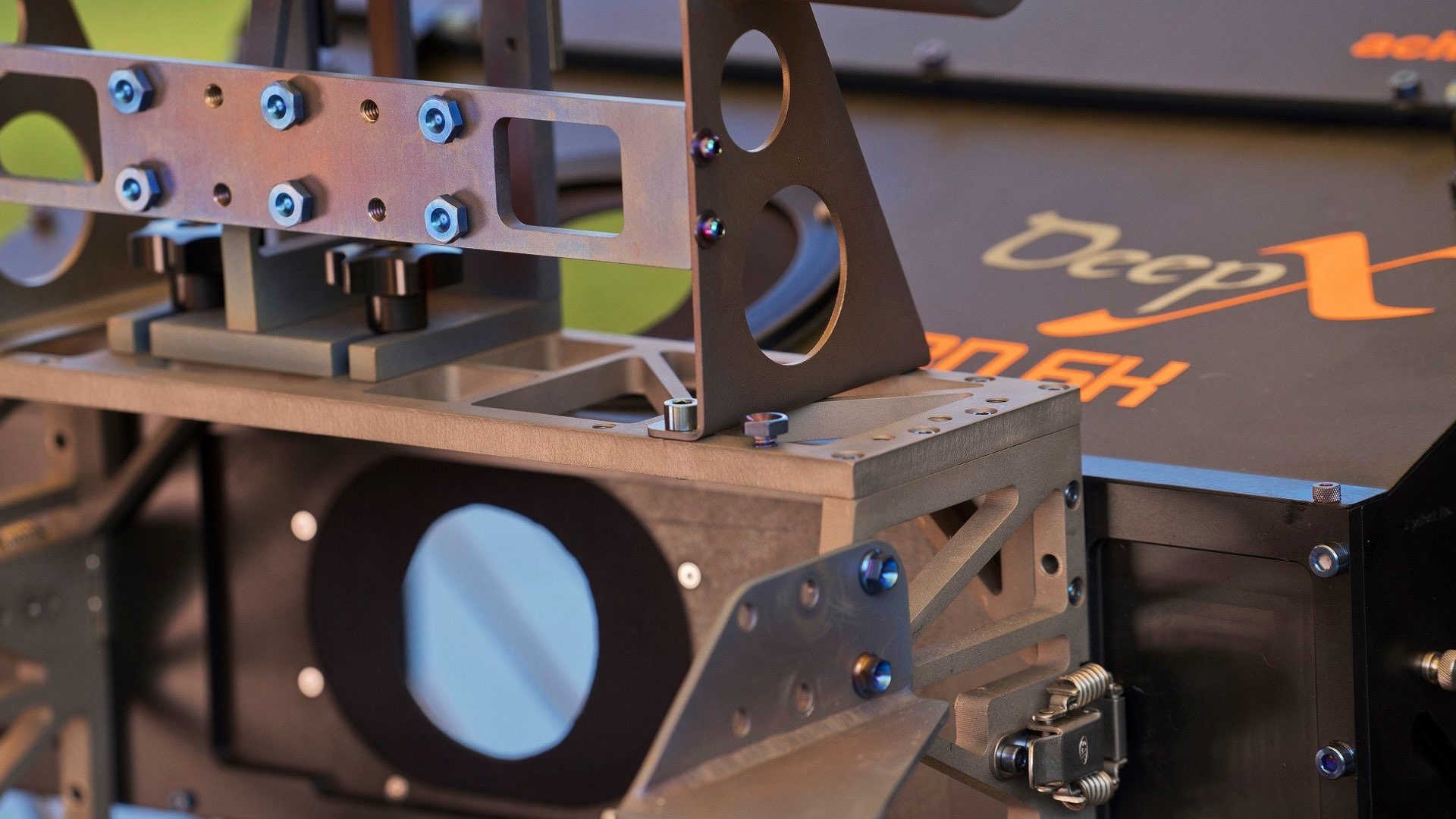
Lens mount
The DeepX 3D System does not require a lens mount as the camera attaches directly to the housing. You will also not need lens servo motors or lens ports, as the Nikonos lenses, are mounted outside the housing. These features provide additional cost benefits, as well as significant weight reduction and reliability. Now, let’s talk about those lenses that were attached to the DeepX 3D in the underwater set of Avatar 2.
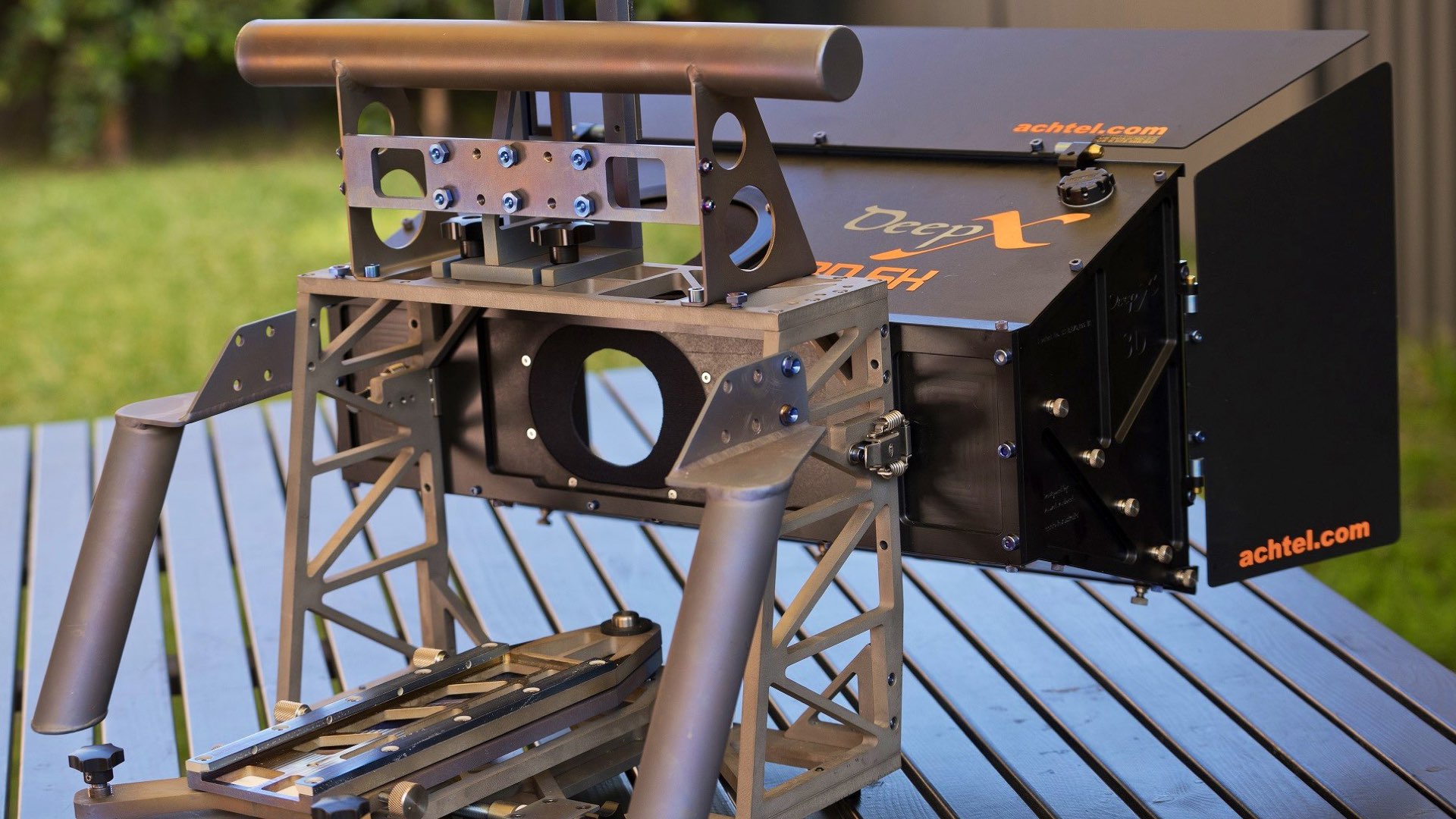
Avatar 2 lenses: 1980s Nikon glass -Nikonos 15mm
The lenses that were attached to the DeepX 3D System are old, and simple submersible lenses by Nikon. As explained by Pawel: “Nikonos 15mm sn #216940 and #202669 (2xxxx serial numbers were introduced in the early 1980s for UW-Nikkor 15mm f / 2.8 N) were the two lenses selected from a pool of over 100 lenses based on their consistent optical performance and sharpness extending from corner to corner. We have measured MTF (Modulation Transfer Function) in 5 points of the frame to evaluate and chose some of the sharpest optics ever created. These two lenses in combination with our patented DeepX 3D submersible beam-splitter offer incredibly immersive and breath-taking underwater images not possible to obtain using any other technology. It looks different because it is different. I hope you like the results as there has never been anything like this ever done before”.
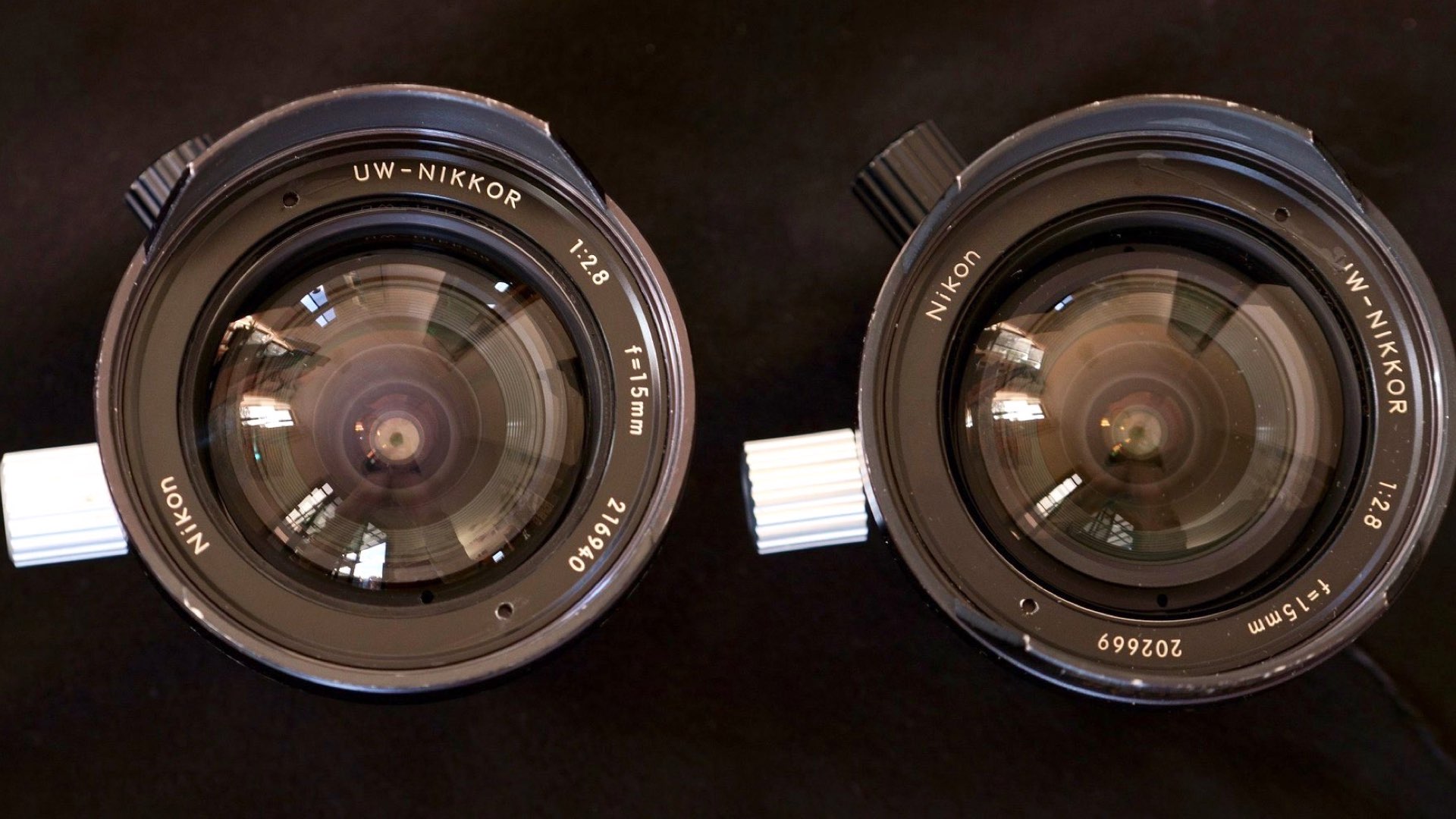
What is Submersible Lens?
A submersible lens is a lens that has been specifically designed to take sharp pictures underwater. It doesn’t produce sharp pictures on land. Its optical design incorporates a water medium as part of its optical formulation. Submersible lenses were pioneered by Nikon about half a century ago. Their branded Nikonos lenses that offered high-quality solutions for range-finder and DSLR underwater still picture cameras. With the arrival of digital cameras, Nikon abandoned its underwater offering. Nikonos lenses to this day offer the highest image quality (by far) when it comes to underwater photography. Thus, this very simple glass was used to capture 3D underwater sequences of Avatar 2 for the huge canvas (IMAX theater).
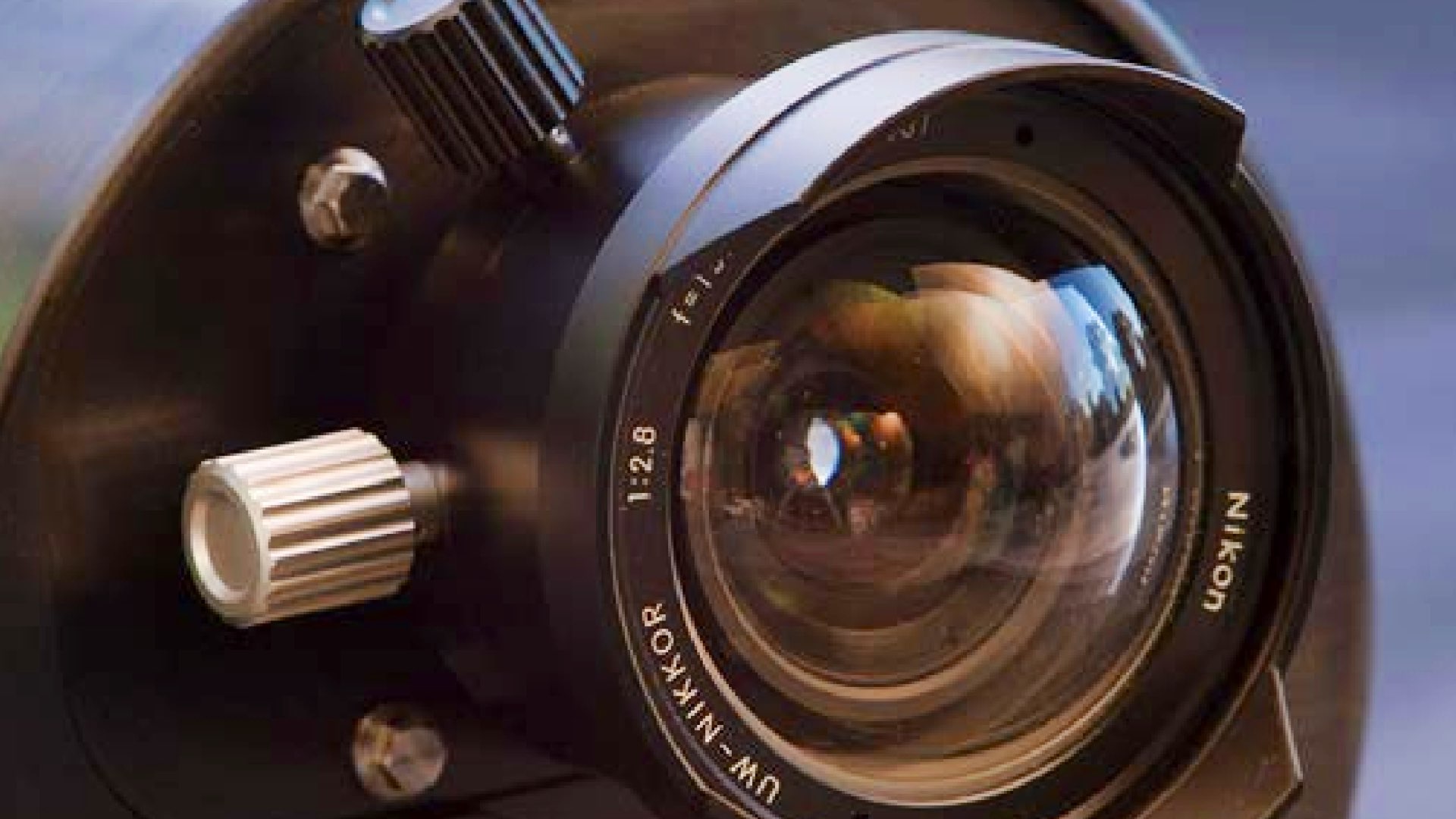
BTW, here’s an example of what can be achieved using his setup:
What James Camera is saying?
Pawel was interviewed by Brett Stanley from the Underwater Podcast, regarding his invention being extensively utilized by James Cameron on Avatar 2. The podcast discusses underwater cinematography, optics, 3D, and the upcoming Avatar 2: The Way of Water, where Pawel’s innovation was used for the first time. Pawel supplied the lenses and the 3D underwater rig that was launched in 2015 (ahead of its time) and has never been used before. As stated by Pawel: “When I actually saw the underwater images coming from the 3D rig on the set of Avatar to the surface and displayed on a 4K 3D screen which is how James Cameron likes to see the images on set. And that was something that the entire team said Wow! The first thing that you noticed is that it looks like air. It doesn’t look underwater at all. There’s no distortion. You’re completely immersed in the image…the mages are completely flat. James Cameron said that he has never ever filmed underwater with this quality before, by far”. Furthermore, Avatar is the only film that utilized this setup. No other project has used it. The DeepX 3D was not built especially for Avatar 2, but for IMAX-dedicated underwater productions. However, James Cameron found it on Pawel’s website and contact him. Pawel states that he knew this setup was perfect for the Avatar 2 production.
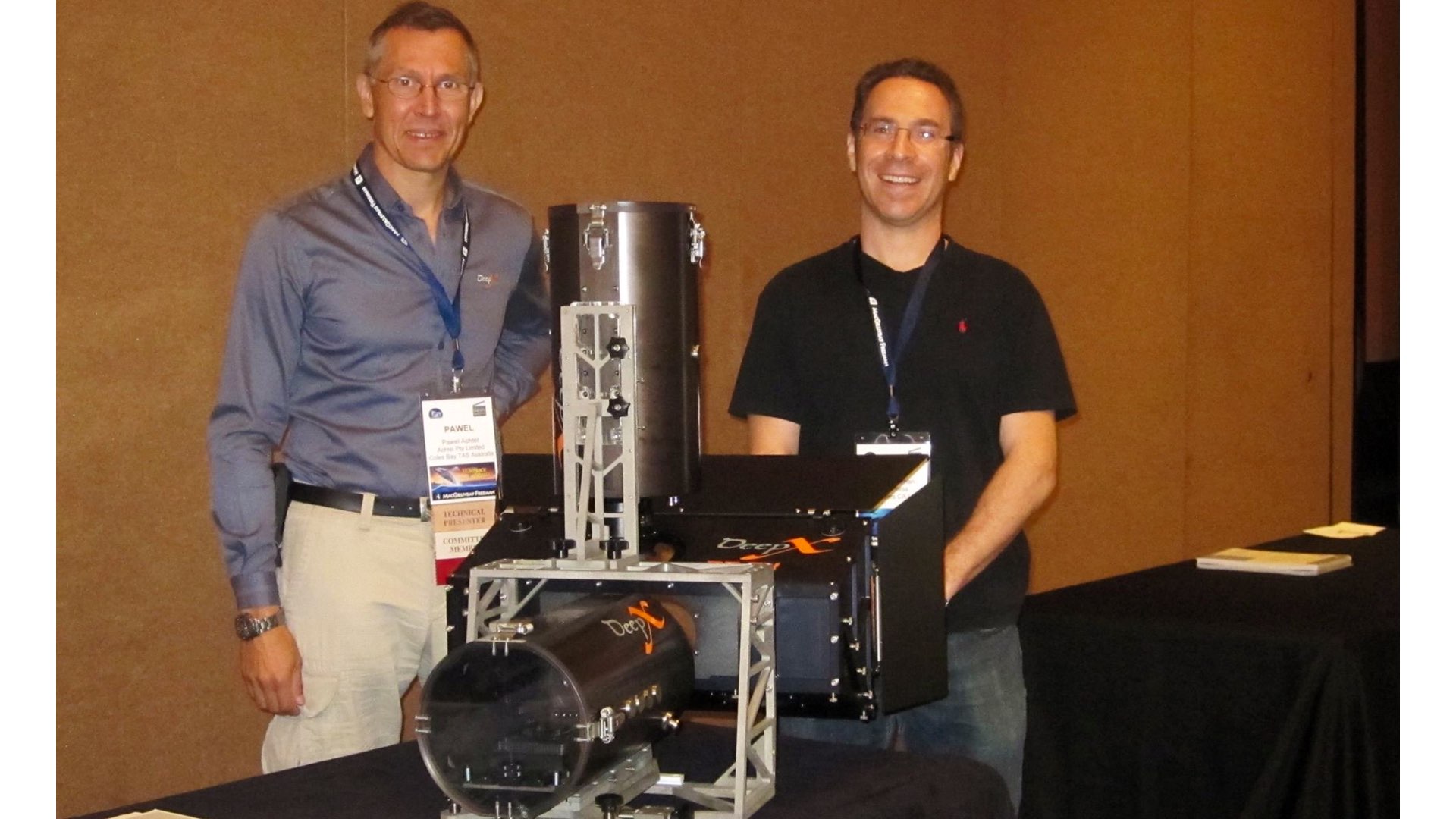
Wrapping up
James Cameron is constantly stating that he was waiting eagerly for the proper 3D cinematography technology to shoot the Avatar sequels and screen it on IMAX 3D. So there you go. This technology which was invented by Pawel Achtel, allows us the privilege of watching the stunning underwater sequences of Avatar 2, on IMAX 3D, correctly, precisely, strain-free, and with maximum immersion. Avatar 2 is finally going to be released on December 16 — We Can’t wait!

